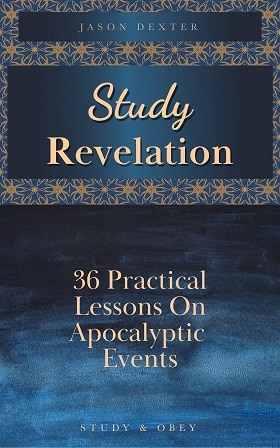These small group studies of Matthew contain outlines, cross-references, Bible study discussion questions, verse by verse commentary, and applications. Visit our library of inductive Bible studies for more in depth inductive studies on this and other books of the Bible you can use in your small group.
Matthew 15:21-39 Inductive Bible Study – Discussion Questions and Verse by Verse Commentary
Outline
I. The Canaanite Woman (21-28)
II. Jesus Heals More People (29-31)
III. Jesus Feeds the Four Thousand (32-39)
I. The Canaanite Woman (21-28)
Discussion Questions
- What do you know about the cities of Tyre and Sidon?
- What can we learn about this woman from verse 22?
- What can we learn about her attitude toward Jesus?
- Why did Jesus not reply to her?
- What did His disciples want Jesus to do? Why do you think Jesus did not send her away, but instead engaged with her in conversation?
- Who is Jesus answering in verse 24?
- Why did Jesus not help her the first time? What does He mean with the answer that He came only to the lost sheep of Israel?
- What can learn about the woman from her reply?
- Was Jesus being rude when He said, “It is not good to take the children’s bread and throw it to the dogs?” How did the lady respond to this?
- What did Jesus do finally? Why do you think He didn’t heal the child immediately?
- Are there any lessons we can learn from this passage? How about related to prayer? How about related to perseverance?
Cross-References
Revelation 7:9 – People from all nations and tongues will be saved.
Isaiah 49:6 – Israel was intended to be a light to the Gentiles.
Matthew 3:15 – Jesus did certain things so that “all righteousness would be fulfilled.”
Luke 18:1-8 – The persistent widow.
Ephesians 6:18 – Keep alert with all perseverance making supplication for the saints.
Romans 12:12 – Be constant in prayer.
Verse by Verse Commentary
1. The city of Tyre – Tyre was a Gentile city, which became part of the Roman Empire in 64BC. It is located 39 miles (63 km) from Galilee, which was the basis of Jesus’ operations.
It is an island city that acted as a major harbor for that area. Tyre and Sidon were locally important cities throughout Old Testament times. Hiram was the king of Tyre and floated cedar trees down to Joppa for building the temple. As an island fortress, Tyre was difficult to attack and largely withstood Nebuchadnezzar’s 13-year siege.
Later Sidon would welcome Alexander the Great, but Tyre refused to let him in the city. Alexander used dirt and other items to build a causeway into the sea, then breached the walls and defeated it thoroughly after only seven months. After this point, Tyre would lose its influence.
The downfall of Tyre was predicted in Ezekiel 26 and 27 and was accurately fulfilled. During Roman times Tyre regained some of its affluence and Sidon was a relatively free and prosperous city. Both of these are still populated today.
2. A Canaanite woman – The area was occupied mostly by Gentiles.
Matthew 15:22 – “Have mercy on me, O Lord, Son of David; my daughter is severely oppressed by a demon.”
Though she was a Gentile, she expresses significant faith in Jesus, referring to Him as Lord and also by His Messianic title, Son of David. In addition, she asks Jesus to have mercy on her, thus acknowledging that she does not deserve His help.
The fact that she went to seek Jesus out shows that she had heard accounts of Him and had faith in Him to help her daughter.
3. But He did not answer her a word –
Matthew 15:23 – But he did not answer her a word.
Jesus does not immediately reply to her. Naturally, we would ask, why wait? We must realize that Jesus is omniscient. He knows what He is going to do. From the beginning, he plans to heal this child.
However, it appears that He wants to test this woman’s faith. It is to her benefit (and perhaps the surrounding peoples’ benefit) to persevere in her request before receiving an answer. It is also beneficial to the crowd and the disciples to see her persistence and faith.
Application – God does not always answer our prayers right away. He may require us to wait to receive what we want. The reason is not that He enjoys making us wait. Rather, the process of waiting can be very beneficial for us. We can learn many lessons while waiting with the right attitude.
Reflect – What kind of lessons can we learn by waiting? In what Biblical accounts did God cause people to have to wait?
A parent may often not give a child what they want immediately because he wants his child to learn patience or to learn to appreciate it more.
We now live in an era of instant gratification. Virtually all the knowledge known to man is available at the click of a button the internet. No more library trips are necessary. Movies and shows can be streamed on demand. All manner of food and cuisine can be delivered within an hour. Shopping can be completed from the comfort of our home and goods show up at the door.
These conveniences are a blessing and a curse. Instant gratification can cause people to become discontent and spoiled, while destroying their attention spans. Perseverance is a trait that seems to be fading from society.
The woman needed to persevere in asking for Jesus’ help and we too need to persevere in prayer (Luke 18:1-8).
3. The disciples ask Jesus to send the woman away –
Matthew 15:23 – And his disciples came and begged him, saying, “Send her away, for she is crying out after us.”
The disciples were annoyed by her behavior. To them, she was like a pest. Her behavior and perhaps her ethnicity annoyed them.
Application – Compassion is not my strong suite. My natural reaction if someone falls is either, “Get up. Brush it off,” or, “You should be more careful.” Like the disciples, do we too sometimes lack compassion and seek to send “problem people” away instead of helping.
Let us consider the following statement about Jesus and how He practiced it in this encounter.
Matthew 12:20 – A bruised reed he will not break, and a smoldering wick he will not quench.
4. Jesus did not send her away – Here we can perhaps get a clue of Jesus’ intention to finally grant this woman’s request. He does not send away the woman like the disciples ask and like He could have done. Why not?
It seems that the only reasonable answer is that He fully intended to do what this lady requested, but only after she and His disciples had learned the lessons He wanted for them. The fact that Jesus would even engage with her and finally grant her request shows us that he was not racist or rude, as some wrongly conclude from this passage.
5. “I was sent only to the lost sheep of the house of Israel.” –
Matthew 15:24 – He answered, “I was sent only to the lost sheep of the house of Israel.”
Jesus sent His disciples to the villages of Israel (Luke 10). Jesus was the Jewish Messiah. He was the Jewish king. He was the fulfillment of many of prophecies given to the Jewish people. His first and immediate mission was to the Jews.
We know that His end vision for the world is saved people from all tribes, peoples, and tongues (Revelation 7:9-12). This long path, which would end in this goal being achieved, first took Jesus to the Jews.
Everything has its purpose and its time (Ecclesiastes 3.) We know that Jesus’ earthly ministry was primarily focused on the Jews. Then His disciples, who were Jews, would be sent out to the Gentiles (Matthew 28:28-30, Acts 1:8).
But we also see Jesus’ compassion for the Gentiles, whom He helps and heals on several occasions. Here He wants His disciples to learn to be mission focused on what God has called them to do, while also showing compassion and going beyond that mission when it is necessary to do so.
Application – What is the mission God has given to you? Do you know who you are sent to or what you are sent to do? If not, you need to prayerfully evaluate your calling through the lens of Scripture and the wise advice of godly friends and try to ascertain what God is calling you to do.
Once you think you know, start doing it and allow God to shift your direction a bit if necessary.
A ship that is anchored and tied to the dock cannot go anywhere and it can’t change direction. Speed is required before a boat can change it’s heading.
Likewise, if you are not moving, you will not be able to adjust course. Some people spend years not doing anything because they “don’t know what God has called me to do” or they “don’t know my spiritual gift.” The first step is to start serving. Once you do that, you can adjust as necessary.
For example, if I volunteer to be on the worship team it won’t be long until someone comes along and suggests a different ministry!
Are you wholeheartedly focused on this mission? Jesus did not let things, even good things, distract Him from His mission. Do you let unimportant, worldly things distract you from the mission God has given you? Are you actively working toward it?
6. The woman is persistent – She is a great example of perseverance. Though she is seemingly rebuffed at the first attempt, she keeps at it. If she had given up on the first try perhaps she never would have seen what Jesus would do for her daughter.
Matthew 7:7 – “Ask, and it will be given to you; seek, and you will find; knock, and it will be opened to you.
Later in verse 27 we see that she persists again in her request even after it looks like she was refused the second time.
7. It is not good to throw the children’s bread to dogs – People naturally question if Jesus was being rude to this woman. It is a reasonable question because in our modern-day culture and the English language usage it does appear to be that. In fact, Jews did rudely refer to Gentiles as dogs during the time of Jesus.
However, the word they used was “kuon,” which was used to un-spiritual people or unclean animals. The word Jesus used was “kunarion,” which is the word used for small dog or a pet dog. It is more of an endearing term similar to our usage of the word “puppy.”
Jesus was simply using terms which they would understand to explain that His mission was focused on the Jews first. Remember that Jesus was extraordinarily busy. Thousands of people followed Him around. They came with constant requests, questions, and favors to ask. It is likely that Jesus received far more requests for help than He had time to fill. Messages or letters petitioning assistance from other towns was likely commonplace. He legitimately had very little time available so He had to prioritize.
His first obligation was to His own “clients” or “patients,” the Jews. At the same time, I believer Jesus was testing her faith like He often did with people. He wanted her to keep persisting until she got a favorable response. His final agreement to help her proves this.
Application – We also need to prioritize. It can be hard to balance the needs of family, church, friends, and relatives. It is possible that saying “yes” to helping a friend comes at the cost of saying “no” to helping a family member. Let us pray that the Lord will give us wisdom and fortitude in fulfilling our primary responsibilities while still being compassionate and showing love toward others outside of that sphere.
Reflect – What principles can help guide you in maintaining the proper balance between your responsibility toward different circles such as family and ministry?
8. Jesus demonstrates His power over distance by casting out the demon – Jesus finally agrees to heal her daughter by casting out the demon. When the lady returned (having believed Jesus’ word) she found out that the demon had been cast out just as Jesus said.
Jesus found the perfect solution to this problem. He taught His disciples compassion even for “problem people” outside of their mission. He taught this lady the importance of persistent faith. He healed the girl who was tortured by this demon. Because He healed across a distance, He was not distracted or pulled away from his primary mission, which was preaching to the Jews.
II. Jesus Heals More People (29-31)
Discussion Questions
- How did Jesus meet these crowds again (they followed Him up the mountain?)
- Did He send them away so He could rest?
- What did He do?
- How did the people respond?
- How can you glorify God and how can help the people around you glorify Him?
III. Jesus Feeds the Four Thousand
Some of the below notes are from the parallel passage in Mark 8.
Discussion Questions
How is this story similar to the feeding of the five thousand? How is it different? Are there any additional insights/lessons you can learn from it? Compare and contrast the disciples’ attitudes in Mark 6 and here.
Verse by Verse Commentary
- This was likely in Decapolis (Mark 7:31), which was primarily a Gentile region. This is the same region Jesus healed the man possessed by legion. Because it was a Gentile region, we see God’s grace and Jesus’ ministry extended beyond the Jews.
- It is likely that many of the people coming heard about Jesus from that man and now had an opportunity to meet Jesus for Himself. It seems Jesus was following a similar strategy as Paul did later, which is to visit places, preach and teach, and then go back again for more encouragement and follow-up.
- Once again, Jesus’ compassion is highlighted. The people had mostly not eaten for days. Obviously Jesus’ teachings were very powerful, which made them want to keep staying and listening to Him.
- The disciples still didn’t seem to get it. You would think they might just immediately say, “Here’s some bread. Do another miracle like last time.” This idea was so foreign to their normal human logic that none of them said this and perhaps even thought about it. While it is only two chapters apart, we are not sure how much time has elapsed. If a month or two or more had gone by that could also help explain why they didn’t immediately think about it.
- The crowds were commanded to sit on the ground. No record is shown of an explanation. They needed to obey without necessarily knowing why.
- This time, there were seven loaves and a few fish. The exact number is not important. What’s more the fact that a different number is reported each time shows us that the number is real (and not an allegory) and that the reporting and writing is very accurate and precise down to the simplest details. Each loaf then needed to feed about 600 people (not counting women and children) and then fill up a very large basket (the word means something like hamper, which a person could fit into).
- Jesus blessed the food again, reminding us of the principle of giving thanks before eating.
- People ate, were satisfied, and there was lots leftover. His miracle was more than sufficient. It was abundant.
- Jesus knows our needs.
- He can abundantly supply our needs.
- We have a responsibility to obey His commands even when we don’t know why and trust that He has a good reason for them.



Leave A Comment